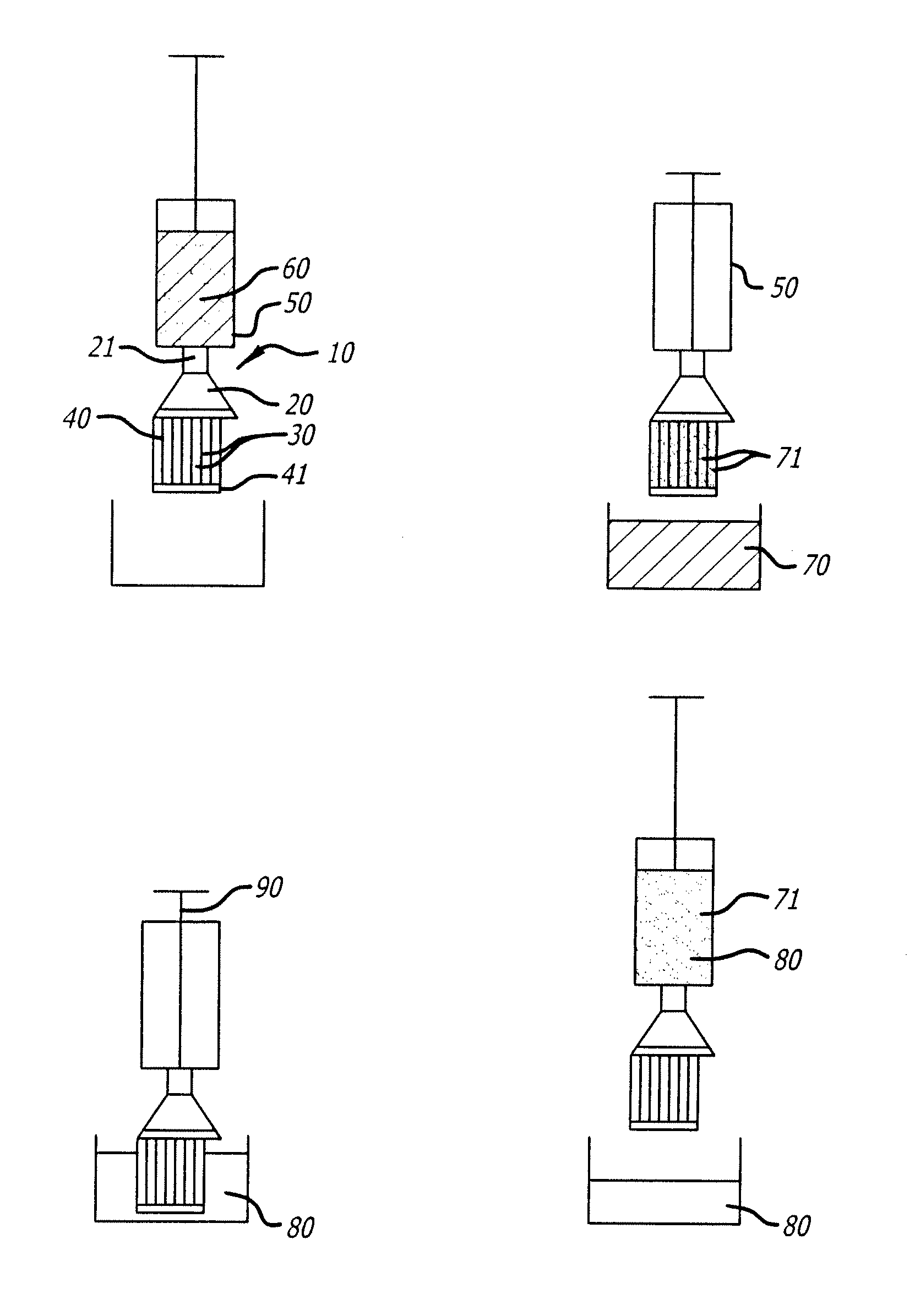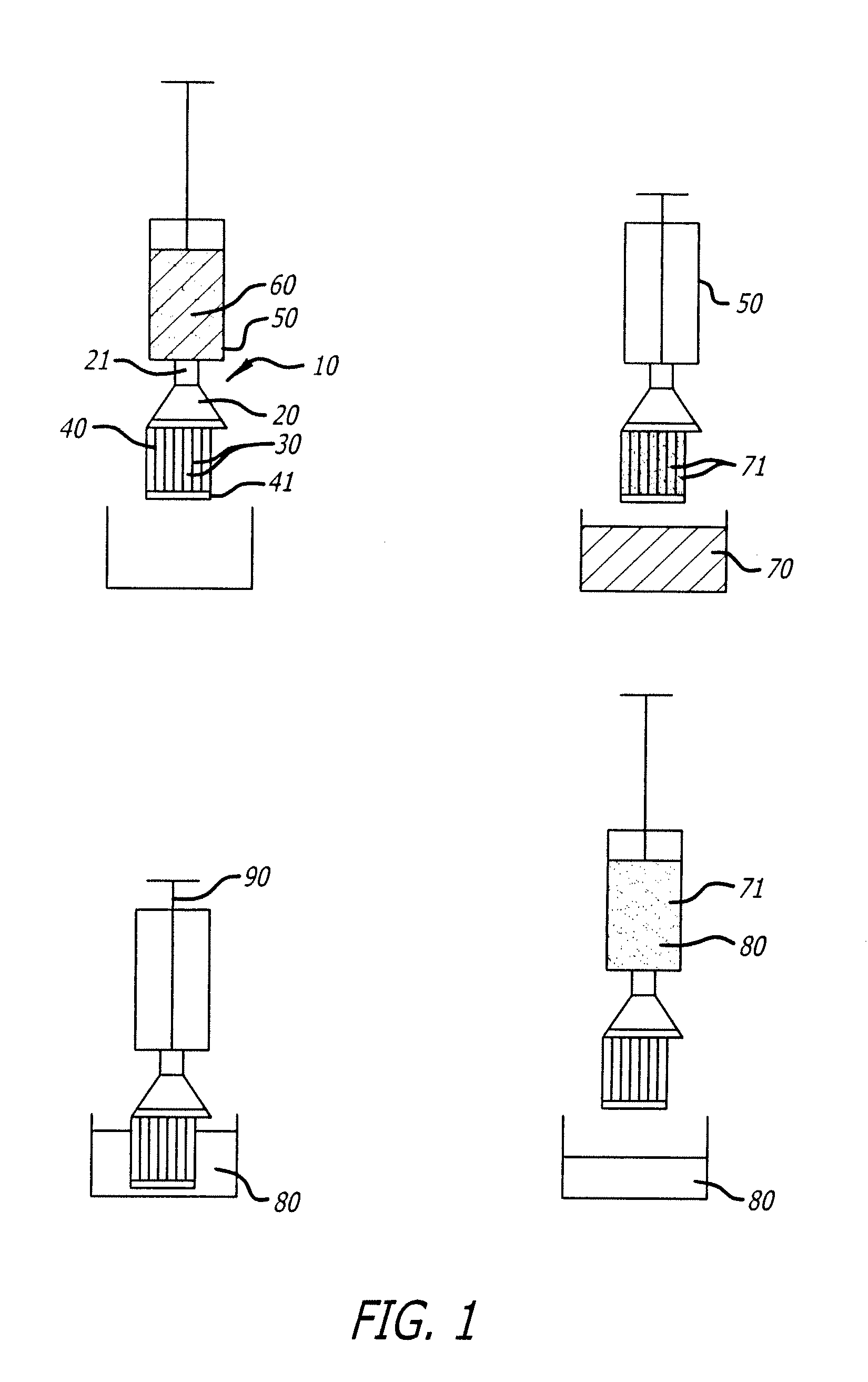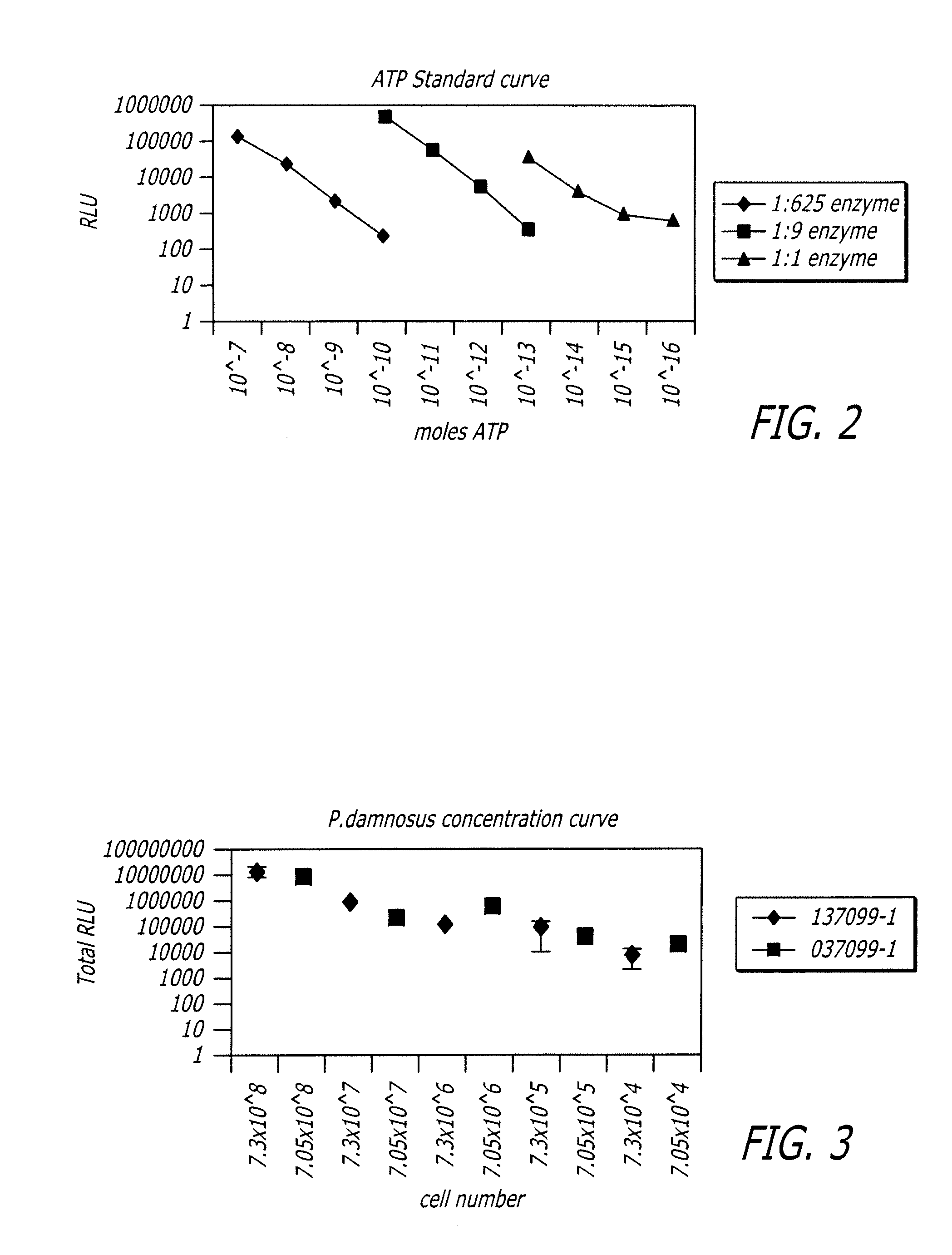Detection of micro-organisms
a microorganism and detection method technology, applied in the field of detection methods of microorganisms, can solve the problems of preventing the detection of microorganisms, cell lysis, and taking up to 30 minutes to test samples
- Summary
- Abstract
- Description
- Claims
- Application Information
AI Technical Summary
Benefits of technology
Problems solved by technology
Method used
Image
Examples
Embodiment Construction
[0034]As can be seen from FIG. 1, a first filter device 10 comprises a sample inlet 20 having Luer lock fitting 21 communicating with 68 hollow polypropylene fibre membranes 30 having an average pore diameter of 0.2 μm. The open ends of membranes 30 are embedded in UV-curable adhesive 40 which holds them in place and allows them to communicate with sample inlet 20. The other ends of membranes 30 are embedded in UV-curable adhesive 41 which closes them. The membranes 30 have been pre-treated by flushing a solution consisting 20% Tween 20 through them and then allowing them to dry.
[0035]In use, syringe 50 holding sample mixture 60 is connected to sample inlet 20 and sample mixture 60 filtered through membranes 30, providing filtrate 70 and filtrand 71. Membranes 30 are then placed in re-suspension solution 80 and plunger 90 of the syringe 50 drawn back, causing a flow of re-suspension solution 80 into the lumen of membranes 30 to re-suspend filtrand 71 retained in membranes 30 and dra...
PUM
| Property | Measurement | Unit |
|---|---|---|
| pore diameter | aaaaa | aaaaa |
| volumes | aaaaa | aaaaa |
| pore diameter | aaaaa | aaaaa |
Abstract
Description
Claims
Application Information
 Login to View More
Login to View More - R&D
- Intellectual Property
- Life Sciences
- Materials
- Tech Scout
- Unparalleled Data Quality
- Higher Quality Content
- 60% Fewer Hallucinations
Browse by: Latest US Patents, China's latest patents, Technical Efficacy Thesaurus, Application Domain, Technology Topic, Popular Technical Reports.
© 2025 PatSnap. All rights reserved.Legal|Privacy policy|Modern Slavery Act Transparency Statement|Sitemap|About US| Contact US: help@patsnap.com



